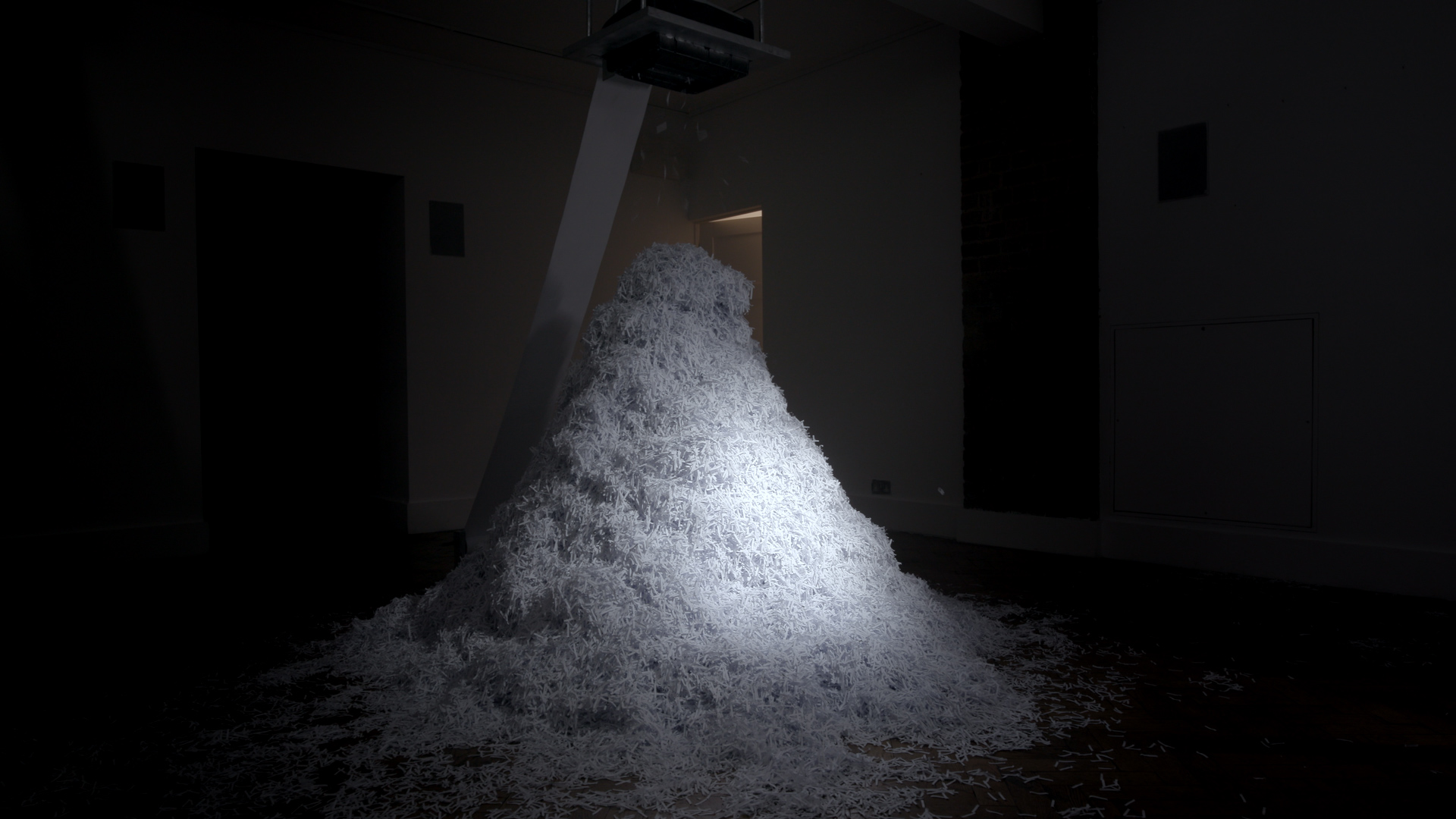Why I shred: The creative power of destruction
- Text by Rudy O'Brien
Cara Mills was staring down a deadline when a flash of inspiration struck. With her art degree at London’s Central Saint Martin’s coming to an end, pressure was building to let people see her work – the first significant opportunity for any young artist.
The only problem was that Cara’s imagination teemed with ideas. She’d dart between creative avenues: getting excited by some, growing bored with others, but never quite sure which one to pursue and which one to leave behind.
So instead of committing to one idea half-heartedly, she decided to make a work of art about the entire process: an artist’s journey between thinking and making.

After documenting every idea she had, Cara fed them all into a giant machine which methodically rated and then shredded each one – spitting them out like a shower of snowflakes.
The five-foot pile of plans that amassed at her feet effectively democratised Cara’s creativity. Reduced to little pieces, all ideas had become equal: the good and the bad, the practical and the unfeasible, the polished and the incomplete.
“I feel like I’ve created an ecosystem where I’ve turned my digital ideas into something tangible, which are then put back onto the online platform for other artists to be inspired by,” says Cara.

The shredding machine is a form of auto-destructive art: drawing from the concept that something can be destructive as well as creative.
At a time when our attention spans are being bombarded, when even a fertile imagination can feel overwhelmed or stumped, Cara’s work serves as a reminder that there are endless opportunities to hit the creative ‘reset’ button and start again.
Watch part 1 of Heightened Senses.
Canvas is a channel funded by the Arts Council dedicated to inspire young people through the arts. Find out more.
Enjoyed this article? Like Huck on Facebook or follow us on Twitter.
You might like

Remembering New York’s ’90s gay scene via its vibrant nightclub flyers
Getting In — After coming out in his 20s, David Kennerley became a fixture on the city’s queer scene, while pocketing invites that he picked up along the way. His latest book dives into his rich archive.
Written by: Miss Rosen

On Alexander Skarsgård’s trousers, The Rehearsal, and the importance of weirdos
Freaks and Finances — In the May edition of our monthly culture newsletter, columnist Emma Garland reflects on the Swedish actor’s Cannes look, Nathan Fielder’s wild ambition, and Jafaican.
Written by: Emma Garland

Capturing life in the shadows of Canada’s largest oil refinery
The Cloud Factory — Growing up on the fringes of Saint John, New Brunswick, the Irving Oil Refinery was ever present for photographer Chris Donovan. His new photobook explores its lingering impacts on the city’s landscape and people.
Written by: Miss Rosen

Susan Meiselas captured Nicaragua’s revolution in stark, powerful detail
Nicaragua: June 1978-1979 — With a new edition of her seminal photobook, the Magnum photographer reflects on her role in shaping the resistance’s visual language, and the state of US-Nicaraguan relations nearly five decades later.
Written by: Miss Rosen

A visual trip through 100 years of New York’s LGBTQ+ spaces
Queer Happened Here — A new book from historian and writer Marc Zinaman maps scores of Manhattan’s queer venues and informal meeting places, documenting the city’s long LGBTQ+ history in the process.
Written by: Isaac Muk

Nostalgic photos of everyday life in ’70s San Francisco
A Fearless Eye — Having moved to the Bay Area in 1969, Barbara Ramos spent days wandering its streets, photographing its landscape and characters. In the process she captured a city in flux, as its burgeoning countercultural youth movement crossed with longtime residents.
Written by: Miss Rosen

